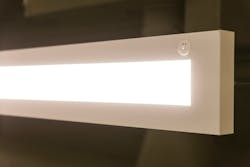The fact that buildings implicate our health is something we have known for centuries, but we’re all viscerally experiencing it right now. For the last year and half, many of us couldn’t even go into commercial buildings because of the risks posed by potential COVID-19 transmissions. Nearly 100 years ago, society went through a similar problem in the wake of the 1918 pandemic. As a result, architects found a new awareness of humans’ relationships to the indoor environment — and the need for incorporating a sense of the outdoors within buildings.
Unfortunately, those early modernism lessons were gradually forgotten – especially as the energy crisis emerged in the 1970s. People sat in unhealthy conditions within tightly sealed buildings that spurred demand for minimum air quality standards because of the phenomenon known as sick building syndrome. Now, in the COVID era, we have another opportunity to rethink how we approach indoor spaces so that they both keep humans healthy and respond to climate change. The imperative is to simultaneously support human health and save energy.
The University of Oregon Energy studies in Building Lab, in partnership with BetterBricks, recently released a white paper that examines how sensor-based luminaire level lighting controls (LLLCs) can balance both health and energy – and help avoid scenarios where these priorities are odds with each other. LLLCs are wireless sensors embedded at the fixture level, which provide light only where it is needed, saving significant amounts of energy. The sensors also have multiple control capabilities that can be leveraged to support building operations.
While technology isn’t a magic wand to fix every issue, LLLCs can serve as the backbone for the future of healthy buildings. The technology can facilitate communication between multiple building systems and leverage distributed environmental sensing technologies to help balance energy and health priorities.
So, how exactly does LLLC support human health and energy savings? At the core are five emerging capabilities:
- Plug-load management
- Asset tracking
- Optimized space usage
- Enhanced energy demand response
- Building integration (e.g., ventilation, security)
While the white paper – and an accompanying webinar– unpacks these topics in-depth, here’s an overview.
Right now, LLLC technology is about dimming when there is ample natural daylight and switching off when there is a lack of occupancy, both of which save energy. Also, some light fixtures can integrate with plug loads, and that essentially turns things like computer monitors off following vacancy. Advanced systems are alerting occupants to available unoccupied locations. Some systems are integrating asset tracking of expensive or in-demand equipment so that tagged assets can easily be located. For example, asset tracking can assist health care personnel to keep track of mobile diagnostic carts and possibly even susceptible individuals (such as a senior in long-term care settings).
Additionally, LLLC is being piloted or rolled out to help electric utilities with their “demand response” programs. When implemented at scale, this can help utilities balance grid-level power demand with supply by dimming lights, specifically targeting areas with better daylight or with lower occupant density.
The area that holds the greatest promise to support health is through building systems integration. For example, improved awareness of real-time occupant location and density can improve ventilation, thermal comfort, visual comfort, and even guide improved circadian dosing. LLLC can help tackle the interoperability and communication challenges that often surround HVAC and lighting systems integration. The distributed occupancy data available via LLLCs can be more precise and more predictive than current CO2 sensors for providing sufficient ventilation when and where it is needed.
The 14-page white paper is available for download here and lays out the vision for how LLLCs and building automation systems can be integrated to support health and reduce energy consumption in a post-pandemic future.
Wymelenberg is the University of Oregon Director at the Institute for Health in the Built Environment. He is one of three authors of the white paper. He can be reached at [email protected].
About the Author
Kevin Van Den Wymelenberg
Kevin Van Den Wymelenberg is the University of Oregon Director at the Institute for Health in the Built Environment. He is one of three authors of the white paper. He can be reached at [email protected].


